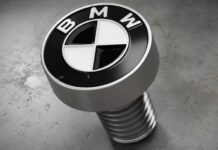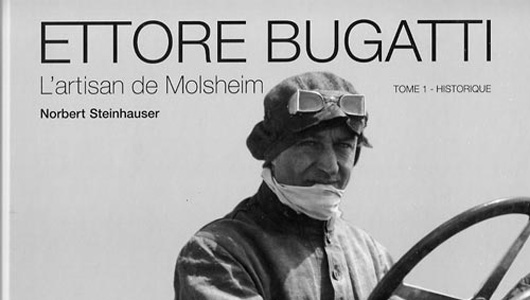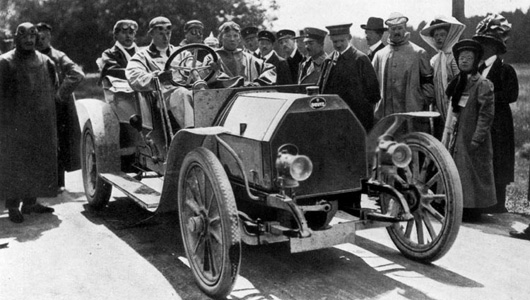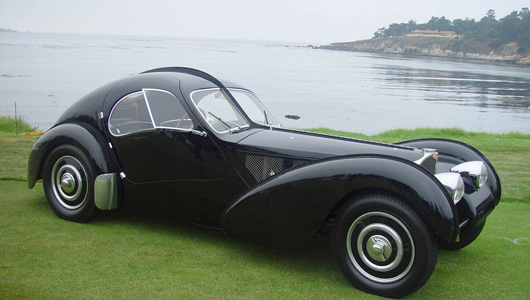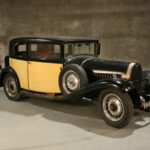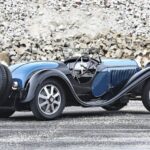Very few individuals are aware of Mr. Ettore Bugatti, the founder of Bugatti, despite our vast knowledge of the world’s fastest and most expensive cars.
> Comment on this article at http://www.facebook.com/Autodaily
From Artist to Craftsman: Ettore Bugatti
Ettore Bugatti, born on September 15, 1881, in Milan, Italy, emerged from an artistic family. His father, sculptor Carlo Bugatti, had already made a name for himself that extended beyond Italy’s geographical borders. Ettore initially pursued art studies at the Art Academy (Milan). However, the allure of art wasn’t enough to retain his interest for long. He abandoned the Academy to work at the Prinetti & Stucchi bicycle manufacturing workshop. By the age of 17, he had constructed a 3-wheeled motorized vehicle and subsequently participated in a race with his first car towards the end of the 19th century.
During the 1901 Milan International Exhibition, Ettore, with the help of the Gulinelli brothers, unveiled a self-made custom car. The French Automobile Club presented him with an award. Since Ettore was underage at the time, contracts had to be signed by his father, who worked for Dietrich. Unfortunately, Dietrich’s inability to match Ettore’s fervor for research and racing prompted a quick termination of their agreement. Ettore then moved on to work for Emil Mathis, where he constructed a car with a 4-cylinder engine while continuing his passion for racing.
In 1909, after nearly a decade employed by multiple car manufacturers, Ettore finally established his own company near Strasbourg in Molsheim. Securing a loan, he built 10 cars and 5 airplane engines.
“The Master Car Maker”
Ettore Bugatti initially created a 1327cc, 4-cylinder engine designated as the Type 13. One of his notable accomplishments included the “Bee” model, based on his design, which was produced by Peugeot. Prior to the war, he also produced models employing engines with 1368cc and 8-valve, as well as 5027cc and 16-valve. A 2906cc, 8-cylinder inline engine was built in 1913. Following an impressive victory at the Brescia Grand Prix in 1921, with Bugatti dominant in the top four positions, all subsequently-produced 16-valve engines were named “Brescia” to commemorate the triumph.

In 1924, Bugatti introduced the Type 35 racing car, equipped with a 2-liter, 8-cylinder engine. This model was also the first to include cast wheels. With over 2000 victories, the Type 35 became the most successful racing car in history.
In 1926, Bugatti endeavored to turn his dream of manufacturing a top-of-the-line luxury car into reality with the Royale model, which boasted an 8-cylinder, 12762cc engine that delivered 300 horsepower! Unfortunately, this legendary release debuted shortly before the world plummeted into the Great Depression. Only three of these exorbitantly priced automobiles were ever sold, leading to Bugatti’s financial ruin.
Fortunately, during the Depression, Bugatti secured a contract to construct a high-speed train for the French government. His accumulated experience enabled him to fulfill the government’s requirements and helped his company ride out the turbulence.
Ettore Bugatti also designed a railcar, known as the Autorail, which met with success. While he dabbled in the aviation industry, his efforts floundered. Tragedy struck when his son, Jean Bugatti, died on August 11, 1939, while test driving a Type 57 racing car near the Molsheim factory. Misfortune persisted as World War II inflicted severe damage upon the Molsheim facility.
The Departure of an Automotive Design Icon
During the war, Bugatti constructed another factory in Levallois, Paris.
With the conclusion of World War II, Bugatti faced financial hardship, unable to afford the rebuilding of the Molsheim factory. He succumbed to a lung illness on August 21, 1947, passing away at a military hospital in Paris.

Although Bugatti only produced 7,900 vehicles during his tenure, many of them still exist today as a testament to his talent and dedication to the advancement of automotive history. Given his substantial contributions to the automotive industry, Ettore Bugatti rightfully earns the title “Master Car Maker”.
Written by Th? Ð?t (According to PL&XH/Source: Compilation)




